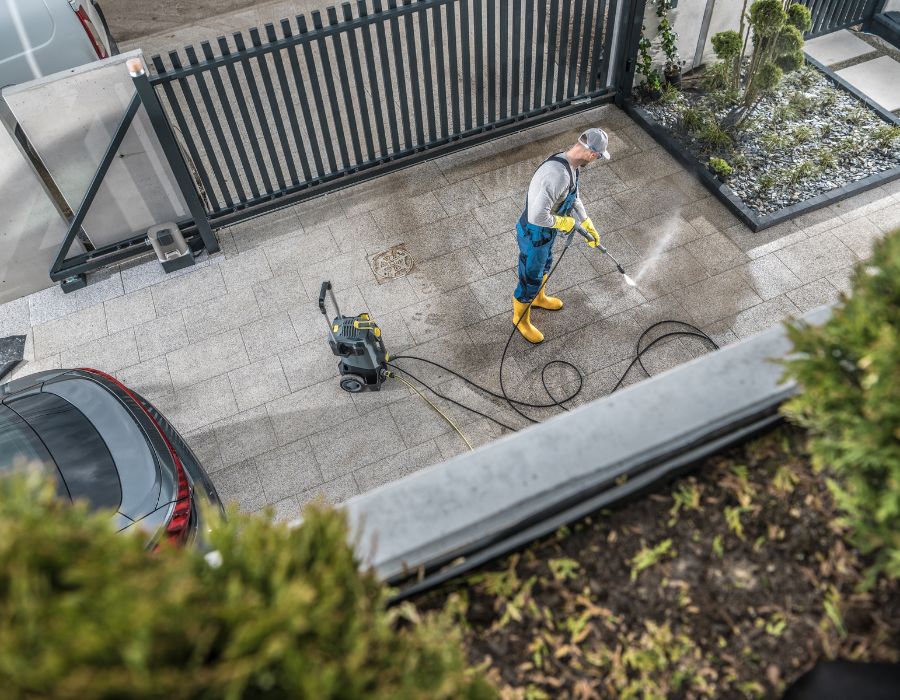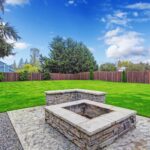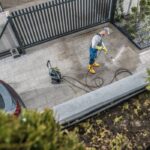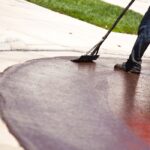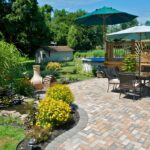Concrete patios and walkways are central features in many San Antonio homes, offering functionality, curb appeal, and outdoor living space. However, the region’s unique climate—marked by scorching summers, occasional cold fronts, and heavy rainfall—means that without proper upkeep, concrete surfaces can quickly degrade. Practicing consistent year-round concrete care is crucial to preserving both the beauty and longevity of these outdoor areas.
With the right combination of routine surface maintenance, protective treatments, and seasonal weather preparedness, San Antonio homeowners can ensure their concrete surfaces remain safe, attractive, and resilient throughout the year.
The Importance of Year-Round Concrete Care
Concrete is durable by design, but it’s far from maintenance-free. Factors like UV exposure, moisture infiltration, and temperature fluctuations can cause cracking, staining, fading, and surface erosion over time. Investing in concrete preservation strategies not only helps maintain appearance but also prevents costly repairs down the road.
In San Antonio, where summer temperatures often exceed 100°F and winter nights can occasionally dip below freezing, proper care isn’t just recommended—it’s essential.
Routine Surface Maintenance: The Foundation of Longevity
The most effective approach to surface protection is consistency. Regular maintenance keeps surfaces clean, detects issues early, and extends the lifespan of any applied sealers or coatings.
Weekly or Bi-Weekly Tasks:
- Sweeping: Remove debris, leaves, and dust that can trap moisture and stain surfaces.
- Rinsing: Hose down surfaces to eliminate dirt and prevent buildup.
- Spot Cleaning: Address small spills, bird droppings, or organic stains quickly using mild soap and water.
Monthly or Seasonal Tasks:
- Deep Cleaning: Use appropriate outdoor cleaning methods such as pressure washing or biodegradable cleaners designed for concrete.
- Weed Removal: Eliminate weeds or grass growing in expansion joints or cracks, which can widen over time.
- Inspection: Check for signs of cracking, flaking, or wear to catch issues before they worsen.
Establishing these habits makes maintenance manageable and ensures surfaces stay looking fresh and clean throughout the year.
Protective Treatments: Sealing in Strength
A cornerstone of effective year-round concrete care is the application of protective sealants. These treatments form a barrier against water, oil, UV rays, and stains, preserving the integrity of the surface.
Types of Protective Treatments:
- Penetrating Sealers: Soak into the concrete and provide long-lasting moisture resistance without altering the surface appearance.
- Film-Forming Sealers: Create a glossy or matte finish and add visual appeal while protecting against oil and UV damage.
- UV-Resistant Coatings: Particularly important in San Antonio’s sun-drenched climate, these coatings prevent color fading and surface breakdown caused by ultraviolet exposure.
Application Tips:
- Reapply sealers every 2 to 3 years or as recommended by the product manufacturer.
- Choose breathable sealers that allow trapped moisture to escape, reducing the risk of blistering or delamination.
- Always clean the surface thoroughly before sealing for optimal adhesion and protection.
By using appropriate protective treatments, homeowners can significantly extend the lifespan and appearance of their patios and walkways.
Seasonal Weather Preparedness: Adapting to San Antonio’s Climate
San Antonio’s weather is diverse, making seasonal weather preparedness a key component of effective concrete care. Preparing surfaces for each season ensures they remain structurally sound and visually appealing no matter what the elements bring.
Spring and Summer:
- Apply UV-resistant coatings to combat solar degradation.
- Ensure adequate drainage to prevent pooling from seasonal storms.
- Use light-colored sealers or coatings to reflect sunlight and reduce heat absorption.
Fall:
- Clean and reseal surfaces before leaves begin to fall and decay.
- Remove accumulated organic matter to prevent staining and surface softening.
Winter:
- Protect surfaces from moisture intrusion before unexpected freezes.
- Use sand instead of de-icing salts, which can damage sealed concrete and accelerate cracking.
- Inspect for cracks or damage and repair them before the colder months arrive.
These preventive strategies reduce the risk of weather-related damage and keep surfaces safe and attractive all year long.
Outdoor Cleaning Methods: Safe and Effective Practices
Proper cleaning techniques are crucial for maintaining clean, attractive concrete without compromising its structure. Harsh chemicals or incorrect tools can do more harm than good.
Recommended Cleaning Tools and Products:
- Pressure Washer (under 3,000 PSI): Effective for large areas but should be used with caution to avoid surface etching.
- Concrete-Specific Cleaners: Biodegradable products formulated to remove grease, mold, and mildew safely.
- Soft Bristle Brushes: Ideal for manual scrubbing without damaging decorative overlays or sealants.
Stain-Specific Cleaning Tips:
- Oil and Grease: Use a degreaser formulated for concrete, and allow it to sit before scrubbing.
- Rust: Apply a rust remover designed for use on masonry surfaces.
- Organic Stains: Use oxygenated bleach or enzymatic cleaners to remove stains from leaves, berries, or algae.
When selecting cleaning agents, always look for products labeled safe for concrete. Using the right outdoor cleaning methods preserves surface integrity while achieving a spotless appearance.
Preventive Strategies: Stopping Problems Before They Start
An ounce of prevention is worth a pound of cure—especially when it comes to concrete care. Implementing small changes can have a big impact on surface durability and appearance.
Key Preventive Measures:
- Furniture Pads: Place under outdoor furniture to prevent scratching or gouging.
- Mats at Entry Points: Catch dirt and debris before it accumulates on concrete.
- Coverings for Heavy Items: Use boards or mats under grills or potted plants to prevent staining or moisture buildup.
- Regular Drainage Checks: Ensure water flows away from the patio or walkway to avoid erosion and freeze damage.
These strategies not only maintain cleanliness but also reduce stress on the concrete, minimizing the need for repairs.
Frequently Asked Questions
What are the best ways to protect concrete surfaces during extreme heat?
To combat San Antonio’s intense summer sun, apply UV-resistant coatings that reflect sunlight and prevent surface discoloration. Consider using light-colored sealers to minimize heat absorption. Keeping surfaces clean and shaded when possible also reduces thermal stress.
How often should I clean and reseal my patio or walkway?
Surfaces should be cleaned at least once a month and resealed every 2 to 3 years depending on exposure, foot traffic, and the type of sealer used. In high-use areas or extreme weather conditions, annual inspections may indicate the need for more frequent resealing.
Which products are safest for removing tough stains on concrete?
Use concrete-specific cleaners that are biodegradable and pH-balanced. Avoid acidic cleaners unless specifically designed for masonry use. For oil, use a degreaser; for organic stains, opt for oxygenated bleach. Always test in a small area first to ensure compatibility.
Can sudden cold fronts damage concrete if not properly maintained?
Yes. Sudden drops in temperature—especially when moisture is present—can lead to freeze-thaw cycles that cause cracks and surface flaking. Applying penetrating sealers before winter and ensuring proper drainage are effective ways to mitigate this risk.
Final Thoughts: Smart Surface Protection for San Antonio Homes
In a city like San Antonio—where weather conditions shift dramatically throughout the year—year-round concrete care is more than just a good idea; it’s a necessary part of homeownership. By practicing routine surface maintenance, applying protective treatments, and preparing for each season, you can protect your investment and enjoy long-lasting, attractive patios and walkways.
Proper concrete preservation ensures that your outdoor spaces continue to serve their purpose—welcoming, functional, and beautiful gathering spots—for many years to come. Whether you’re refreshing a well-loved patio or installing a new walkway, consistent care is the key to maximizing both aesthetic value and structural integrity.

